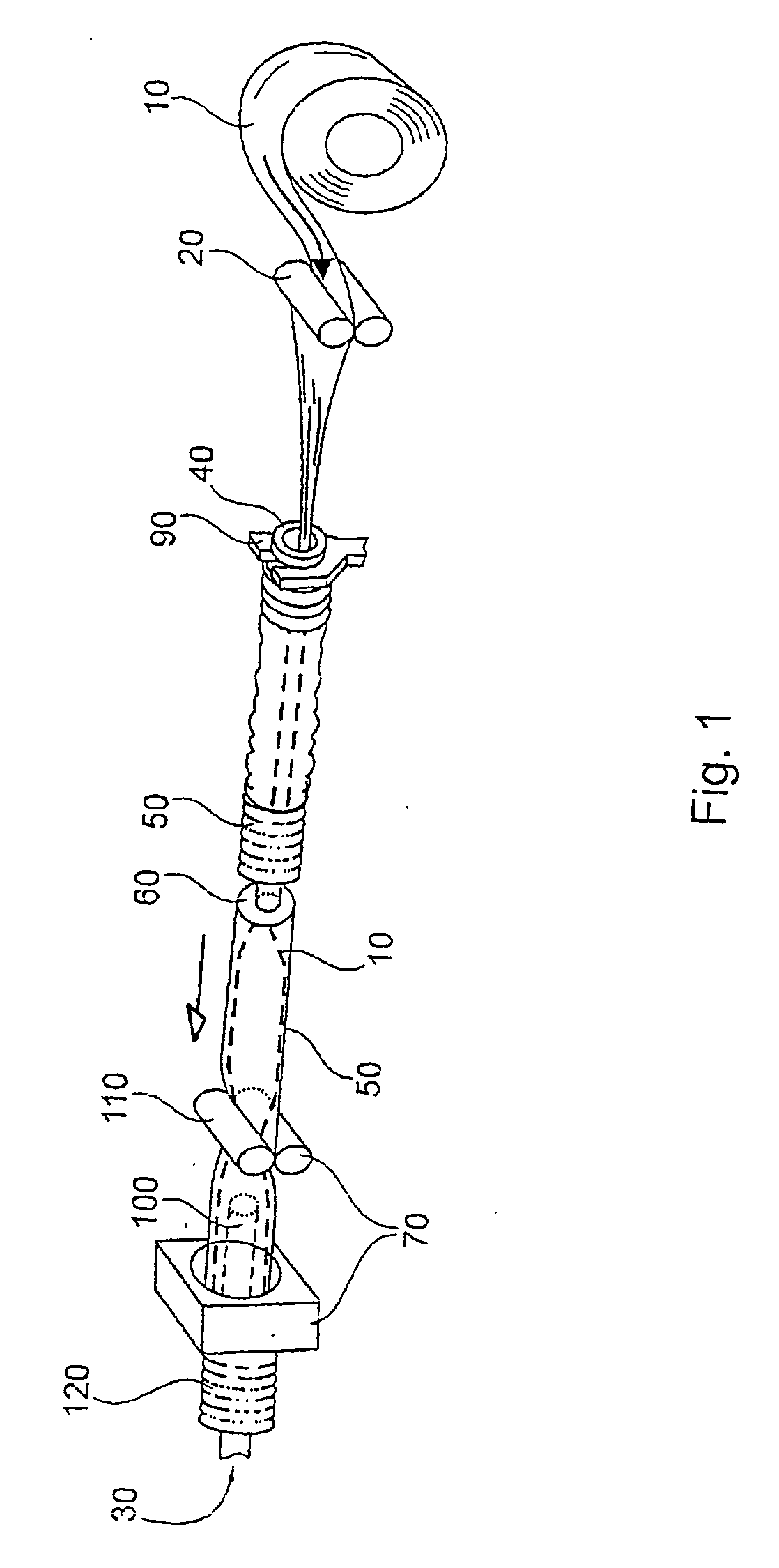Process For Producing A Composite Food Casing
a technology of composite materials and food casings, which is applied in the direction of hollow articles, cellulosic sausage casings, sausage casing shirrings, etc., can solve the problems of spoilage of food products and the decline in popularity of such casings
- Summary
- Abstract
- Description
- Claims
- Application Information
AI Technical Summary
Benefits of technology
Problems solved by technology
Method used
Image
Examples
example 1
[0064]A composite casing was manufactured according to the method described in FIG. 1, where three fibre-reinforced casings based on regenerated cellulose were impregnated with a solution comprising liquid smoke and caramel colour. The solution contained 16.9% of liquid smoke and 43.9%, by weight, totally. The casings used were as follows:[0065]a) Inner casing without adhesion improver[0066]b) Inner casing with slight improvement in adhesion[0067]c) Inner casing with more improvement in adhesion than in b)
[0068]Adhesion improvement of inner casing was carried out in connection with the manufacture of the casing using aqueous cationic polyamide epichlorohydrin resin solution having solid content in b) 0.006% and in c) 0.02% by weight.
[0069]In the process the above, impregnated fibrous casings were combined with fivelayer plastic casing, and the combinations were shirred and cut to sticks. The desired compact sticks were obtained, ready for the manufacture of sausages.
[0070]Macerated ...
example 2
[0073]Composite casing was manufactured with the method described in FIG. 1, where three different fibre-reinforced casings based on regenerated cellulose, of calibre 85 mm, were first impregnated with a solution comprising liquid smoke and caramel colour. The solution contained 16.9% of liquid smoke and 43.9%, by weight, totally. The casings used were as follows:[0074]a) Inner casing without adhesion improver[0075]b) Inner casing with slight improvement in adhesion[0076]c) Inner casing with more improvement in adhesion than in b)
[0077]Adhesion improvement of inner casing was carried out in connection with the manufacture of the casing using aqueous cationic polyamide epichlorohydrin resin solution having solid content in b) 0.006% and in c) 0.02% by weight.
[0078]In the process the above, impregnated fibrous casings were combined with fivelayer plastic casing, the combinations were shirred and cut to sticks. The desired compact sticks were obtained, ready for the manufacture of saus...
PUM
 Login to View More
Login to View More Abstract
Description
Claims
Application Information
 Login to View More
Login to View More - R&D
- Intellectual Property
- Life Sciences
- Materials
- Tech Scout
- Unparalleled Data Quality
- Higher Quality Content
- 60% Fewer Hallucinations
Browse by: Latest US Patents, China's latest patents, Technical Efficacy Thesaurus, Application Domain, Technology Topic, Popular Technical Reports.
© 2025 PatSnap. All rights reserved.Legal|Privacy policy|Modern Slavery Act Transparency Statement|Sitemap|About US| Contact US: help@patsnap.com



